I am convinced that the fastest and most effective way to memorize Scripture is by using what I call the First Letter Method. This simple, powerful technique has been a game-changer for countless people—whether you’re working on a single verse or memorizing entire books of the Bible.
In this article, we’ll explore exactly how it works and uncover five unique ways to apply it in your Bible memory journey, whether as part of your internalization or review process. Even if you’ve already used the first-letter Scripture memory method, I promise that you’ll learn a new way to implement the method in your memory journey below.
Use the links below to jump to a specific part of this article, or scroll down to continue learning this amazing method.
- What is the First Letter Method for Bible Memory?
- Use Case #1: Mobile App Memorization
- Use Case #2: Tactile Memorization
- Use Case #3: Printed Review Sheets
- Use Case #4: Physical Reminders
- Use Case #5: Hung on a Doorpost
Let’s dive in!
What Is the First Letter Method?
The First Letter Method for Bible memory is a way of abbreviating a biblical passage of text by removing everything except for the first letter of every word and the punctuation.
Here’s a simple example using Romans 3:23 as an example:
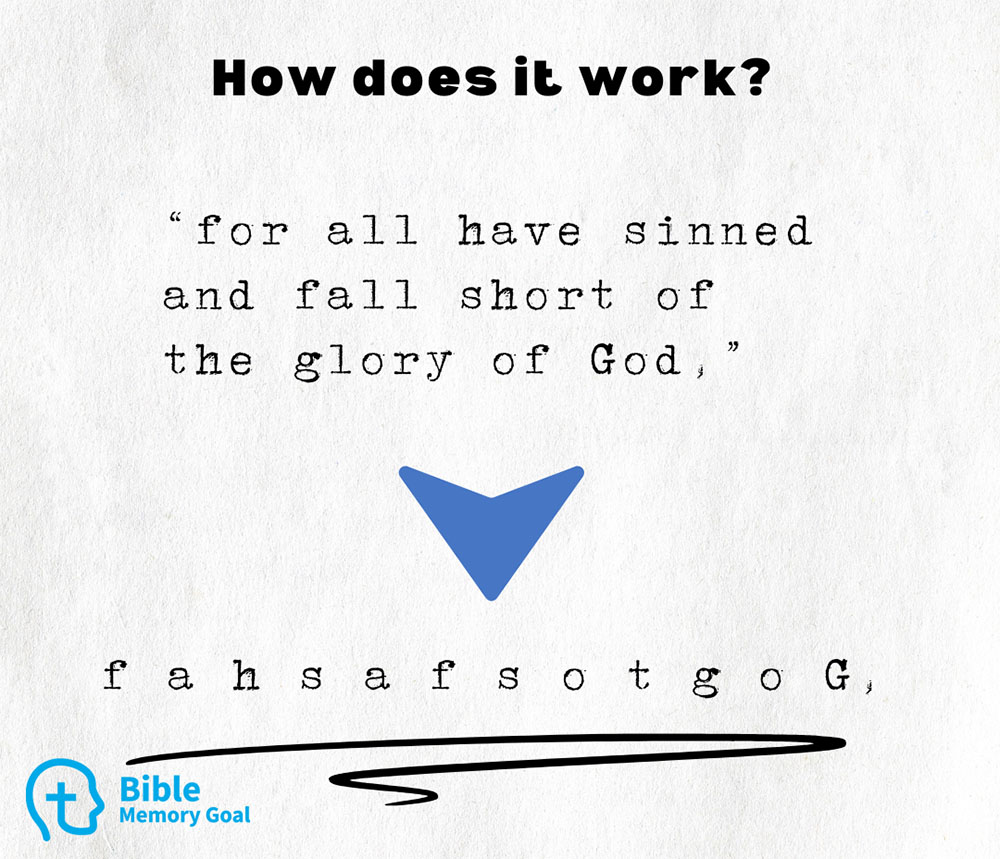
The benefits of using this kind of method when you memorize Bible verses are that it:
- Provides helpful hints without giving away the answer;
- Forces your brain to actively recall the full verse;
- Is much faster to write or type than full-text versions;
While actors and orators have used this memory trick for years, it’s surprisingly underutilized among Christians. Let’s change that!
1. Use Bible Memory Apps with First Letter Features
There are numerous mobile phone apps that can be downloaded (both free and paid) on the app store to help with Bible memory. I’ve detailed some of the best Bible memory apps available here, and for most people this is their first introduction to the first letter method.
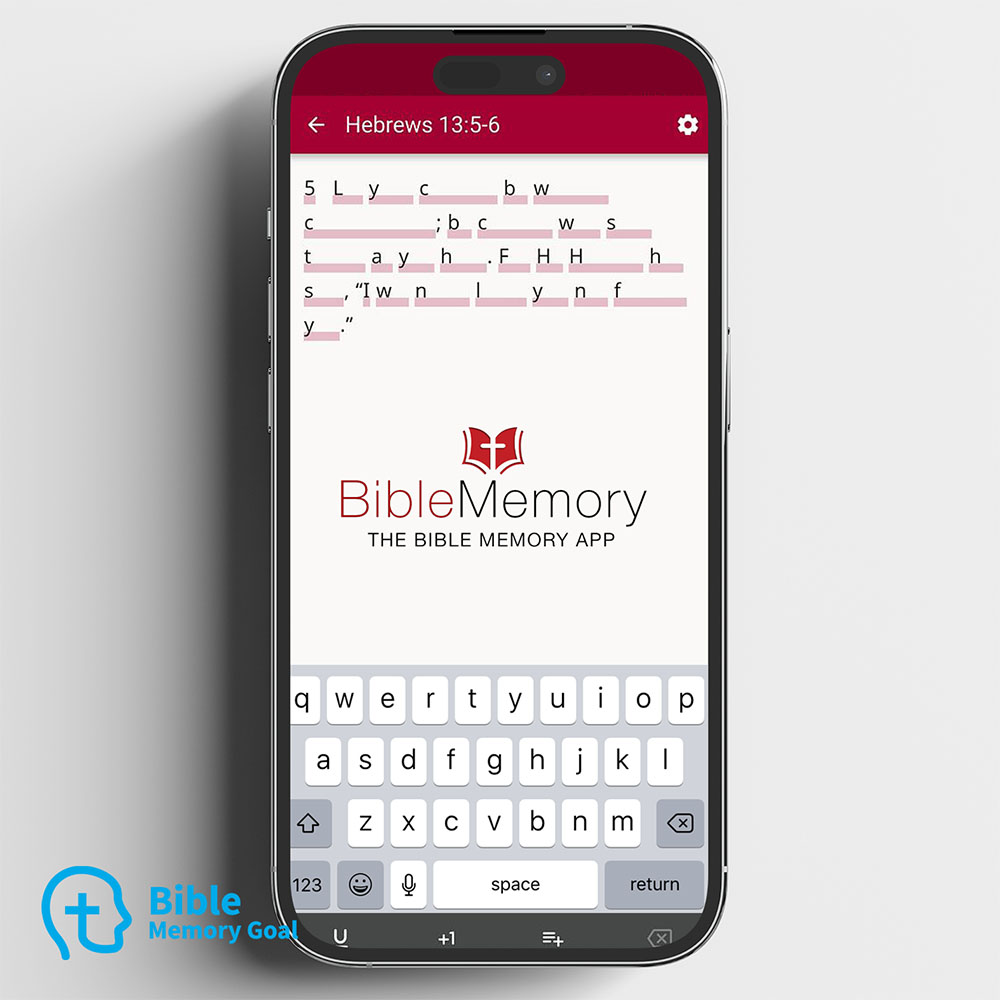
Some of my favorite Bible memorization apps include:
Each of these apps let you type just the first letter of each word rather than the entire verse. These apps build the method right into your review system—no extra setup required.
But don’t stop there! Most people stop with this digital version, missing out on other powerful applications of the technique.
2. Try the Tactile Memory Method (Old School Works!)
Writing by hand, as slow as it may be, is still one of the most effective memory tools we have.
The act of writing something down combines your sense of touch (pen to paper) with your sense of sight (looking at the paper) to create an even stronger connection to the Bible verse you’re trying to internalize.
There are a lot of creative ways to employ tactile memory with the first letter method. For example, you could write them on small business cards, like our community member Melinda P:
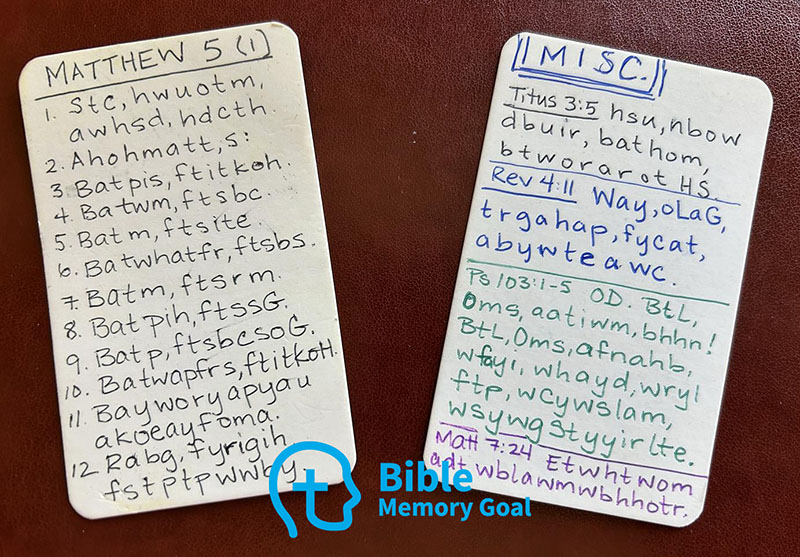
Or you could print out our free Bible memory grid and write them out by hand like one of our community Patrons named Carrie S did with Colossians.
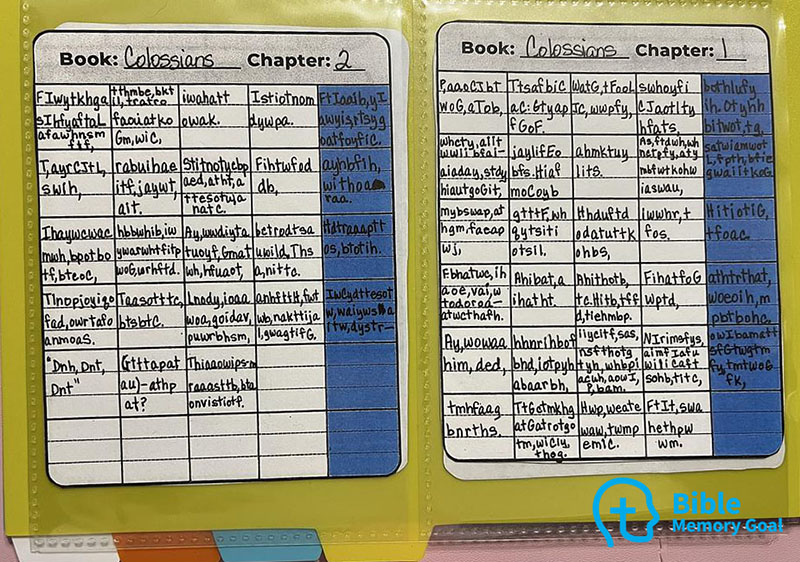
There’s also the basic flashcard made using a 3×5 index card. You can write the verse reference on one side and then instead of writing out the whole verse on the back, you just write out the first letter like Rick G. did here.

Bonus: What about…a Typewriter?
Who said that tactile memory only includes a pen? Another member in our Bible memory community has one of those old fashioned typewriters and uses that to type out the full verse on one side of the page and the first letters on the other side.
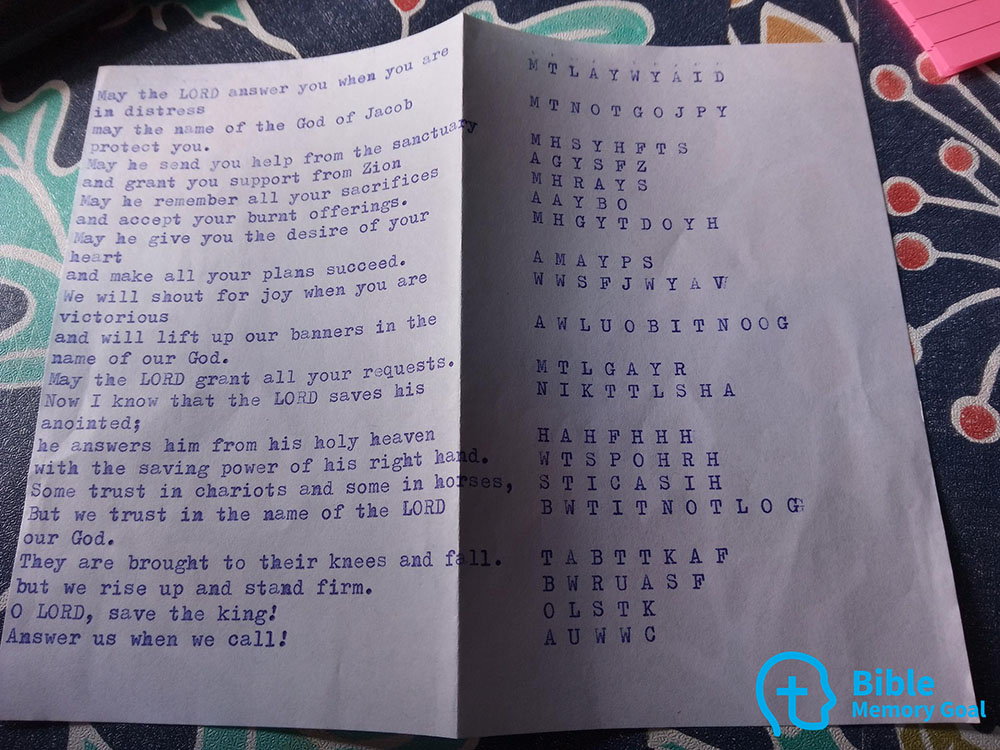
Whether you use a typewriter or write it down in a notebook, an additional benefit of writing it all out – aside from the stronger memory! – is that it gives you a tangible record of what you memorized.
And that can be pretty cool to look back on!
3. Print First Letter Review Sheets
Sometimes you just want a quick printed version of a passage to print out and review.
Maybe you don’t have time to write it down or maybe you’ve put it in a notebook and you’d rather have a printed version that’s easier to fold and put in your pocket.
In either case, there are some really cool ways that you can easily get a printed, first-letter version of whatever you’re memorizing. For example:
- First Letter for ESV (Bates): This simple website can produce first letter text of any passage in the ESV for free.
- Scripture Memory Fellowship Grid: Scripture Memory Fellowship developed a tool that offers quite a few translation and transforms any passage into a first letter grid.
- AI-Powered First Letter Tool: One of my favorite tools is this AI-powered custom GPT that allows you to copy and paste whatever text you want to have it abbreviated to first-letter only. This means that you can use whichever translation or language you want!
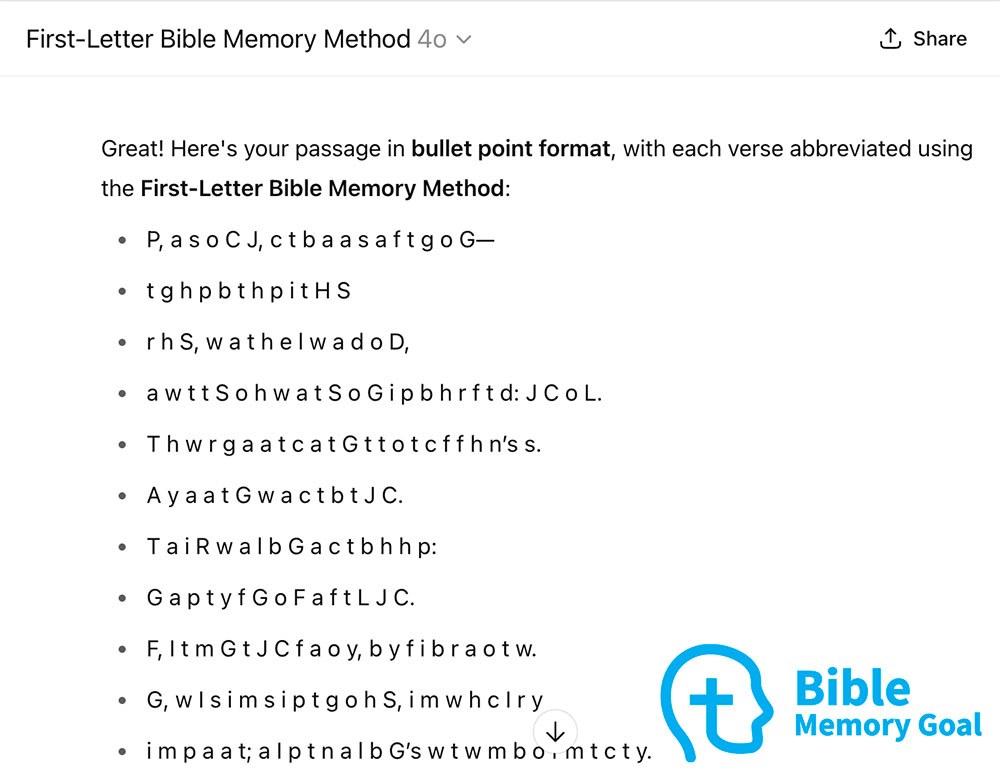
The benefit of these printed sheets is that they are:
- Portable
- Easy to fold and review
- Perfect for visual learners
Bonus Tip: Choose the Format That Works Best for You
Everyone’s brain works a bit differently. Some prefer:
- One verse-per-line: each verse is written or printed out on its own line;
- 5–6 words per line: As you can see below on the left side, some people like to break up each verse into smaller chunks for easier memorization;
- Grid layouts: The example on the bottom right shows the grid layout with a verse per box.
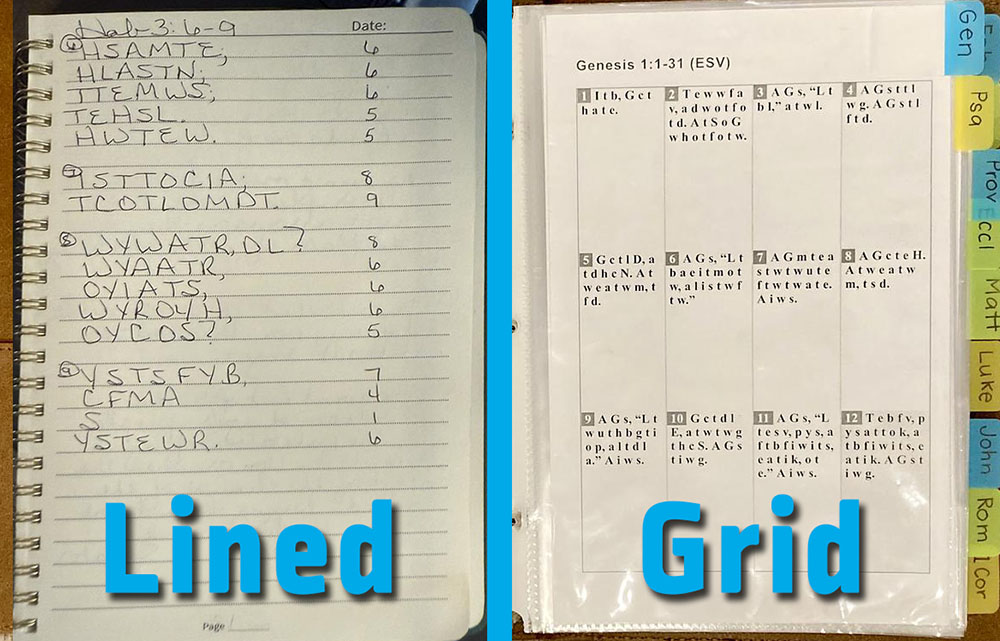
There’s no right or wrong format, so experiment until you find what works for you.
4. Wear Your Verses (Physical Reminders)
Another awesome way to take advantage of the powerful first letter method for Bible memory is with physical reminders.

It could be something like this shirt, which has 2 Timothy 3:16-17 written on it, but there are plenty of other options. For example, there are:
- Bracelets
- Temporary tattoos
- Bookmarks
- Keytags
Small businesses such as Dwell Differently or the Bible Memory Project offer a wide range of beautiful, physical products that you can use to remind you to review a verse anywhere you go.
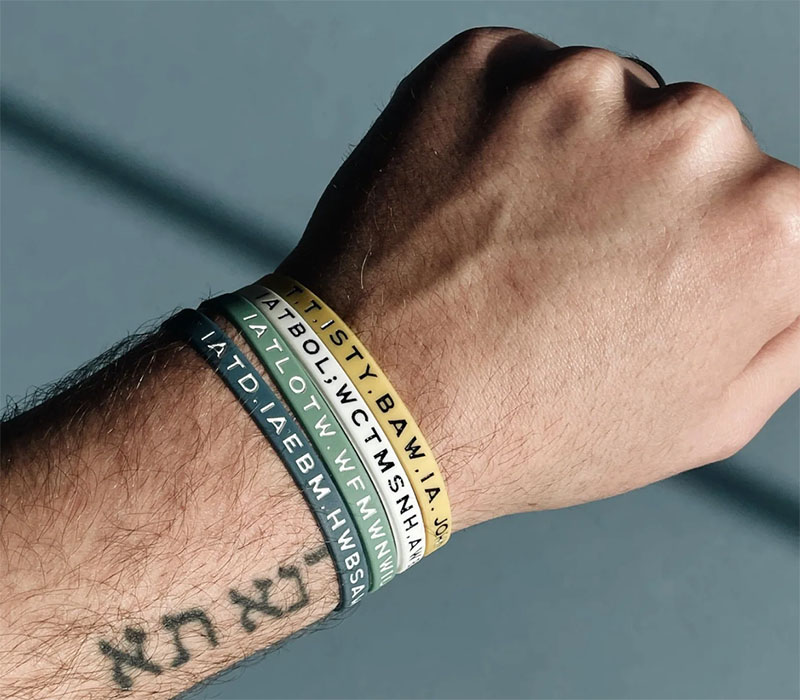
These wearable items serve a dual purpose:
- Remind you to review throughout the day
- Invite others to ask, “What does that mean?”
A shirt with 2 Timothy 3:16-17 in first-letter format might seem cryptic, but that’s the point—it starts conversations and points people to God’s Word and gives me an open opportunity to share why I love to memorize it!
5. Hang Verses on Your “Doorposts” (Everyday Reminders)
This tip for using the first-letter method for Bible memory is inspired by a verse in Deuteronomy that reads:
“These commandments that I give you today are to be on your hearts…Write them on the doorframes of your houses and on your gates.”
Deuteronomy 6:6, 9
This is similar to the physical products reminders, but usually not as public. For example, you have the first letter of your next Bible memory verse “hung” on your:
- Phone lock screen: Perhaps you have to recite the verse before you can unlock the phone? That would limit your screen time quickly!
- Shower wall: I know some people who laminate their paper and hang it in the shower to remind them to review.
- Bathroom mirrors or kitchen backsplash: Put those backsplash tiles or glass to good use!
These little cues help keep God’s Word top of mind, even during your daily routine.
Ready to Go Deeper?
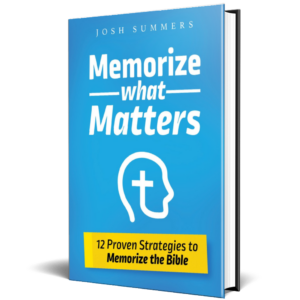
The First Letter Method is just one of 12 proven strategies featured in the book Memorize What Matters. Available in English and now also in Spanish.
It’s packed with practical, encouraging tools to help you hide God’s Word in your heart.
👉 Learn more at MemorizeWhatMatters.com
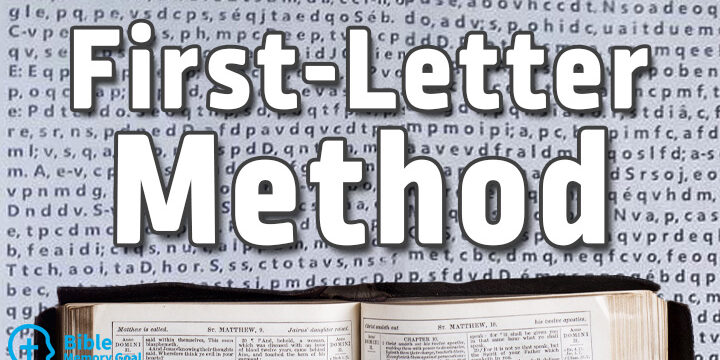


Leave a Reply